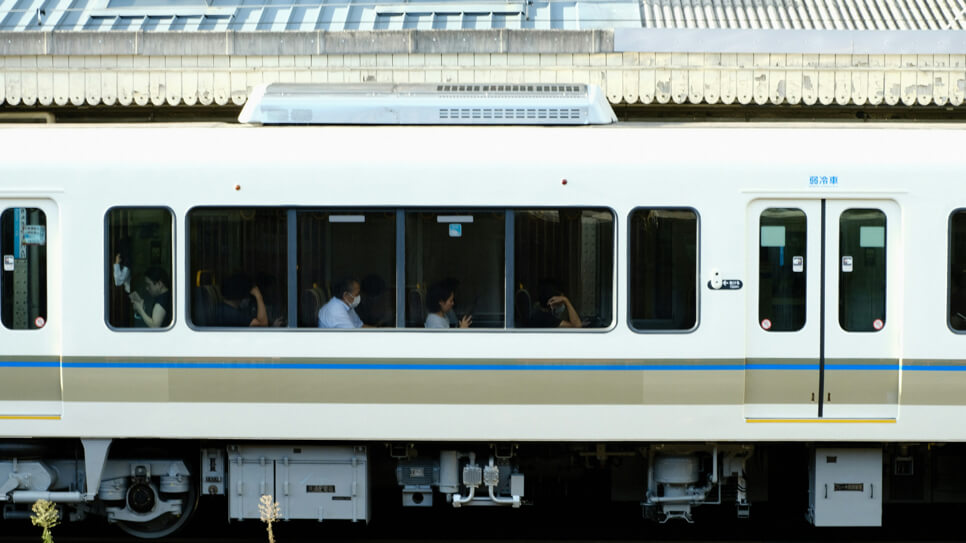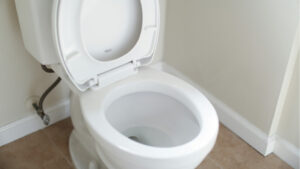Japan has a well-developed public transportation system, and its traffic rules are strictly enforced. For first-time visitors, the unique traffic manners and regulations can sometimes be confusing. This article provides a clear explanation of the basic traffic rules, how to use public transportation, and safe cycling practices that you should know to travel safely and smoothly in Japan. Let’s learn the key points to ensure a safe and enjoyable travel experience in Japan.
Contents
Understanding the Basics of Japan’s Traffic Rules
Characteristics of Japan’s Traffic Rules
Rule of Left-Side Traffic
In Japan, all vehicles, bicycles, and pedestrians follow the basic rule of driving or walking on the left side of the road. This rule helps unify traffic flow and maintain safety by having everyone move on the left side. For example, vehicles travel on the left side of the center line, and pedestrians are also encouraged to walk on the left side of sidewalks. Visitors from countries where right-side traffic is the norm may find this confusing at first, but with time, it becomes easier and safer to navigate. When waiting at traffic lights or crossing crosswalks, always be sure to check carefully for safety on both sides.
Meaning of Traffic Lights and Signs
Japan’s traffic lights use three basic colors: red means “stop,” green means “go,” and yellow means “caution.” Pedestrian signals also follow the same color system, with the green light indicating that it is safe to cross. Additionally, various traffic signs indicate one-way streets, no parking zones, speed limits, and more. These signs are designed with clear symbols and shapes to be easy to understand even for first-time visitors. It is important to follow the instructions of these signs and signals carefully, as failure to do so can result in penalties.
Concept of Pedestrian Priority
In Japan, pedestrians are highly respected, and cars and bicycles must always give priority to them. On sidewalks and crosswalks, pedestrians have the right of way, and vehicles are obligated to stop and allow them to cross safely. Especially at crosswalks, vehicles must come to a complete stop when pedestrians are about to cross. Bicycles riding on sidewalks must also slow down and avoid interfering with pedestrians.
Speed Limits and the Strictness of Drunk Driving Laws
Speed Limits on General Roads and Highways
In Japan, speed limits are set based on the type and location of the road. On general roads, speed limits typically range from 40 km/h to 60 km/h, with residential areas often having lower limits of around 30 km/h. On highways, certain sections allow speeds of up to 100 km/h or 120 km/h, but drivers are expected to reduce speed according to safety conditions. Exceeding the speed limit is considered a violation and may result in fines and penalty points. Always pay close attention to speed limit signs and road markings, and prioritize safety when driving.
Penalties and Risks of Drunk Driving
Japan has very strict laws against drunk driving, which is absolutely prohibited. If caught driving under the influence, drivers face license suspension or revocation, fines, and even criminal penalties including imprisonment. Additionally, causing an accident while drunk can lead to serious risks such as compensation claims and loss of social trust. It is strongly recommended to avoid driving after drinking and to use public transportation or taxis instead.
Seatbelt Wearing Obligations
In Japan, not only drivers but also all passengers are legally required to wear seatbelts. Failure to wear a seatbelt may result in penalties imposed on the driver. Especially on highways or during long-distance driving, wearing seatbelts is essential for safety. Seatbelt use is mandatory in rear seats as well, and child safety seats are required for young children. Ensuring that everyone wears their seatbelt is a fundamental part of safe driving.
Types of Traffic Violations and Penalties
What is the Violation Point System?
Japan applies a “violation point system” to traffic offenses, where points are added depending on the type of violation. When the accumulated points exceed a certain limit, administrative penalties such as license suspension or revocation are imposed. For example, minor violations add a few points, while serious violations add higher points. Points usually expire after a certain period (typically three years), but repeated violations result in stricter penalties. Therefore, it is important to always follow traffic rules.
Parking Violations and Failure to Stop
Unauthorized parking or parking outside designated areas is strictly prohibited in Japan. Violators may receive a ticket, have their vehicle towed, or be fined. Additionally, failing to stop at stop signs or red lights at intersections is also considered a violation, which can result in point additions and fines. These violations can cause traffic accidents, so special attention is necessary.
Examples of Fines and License Suspensions
The penalties for traffic violations vary depending on the offense. For instance, speeding fines can exceed 10,000 yen, and if accumulated points exceed a certain level, the driver may face license suspension for three months to one year. In cases of drunk driving or serious accidents, license cancellation or criminal penalties may apply. Even for first-time offenders with no prior record, severe penalties exist, so it is always essential to obey traffic laws.
How to Use Japan’s Public Transportation
Using Trains and Subways
How to Buy Tickets and Use IC Cards
To use trains and subways in Japan, there are two main ways to pay: purchasing tickets or using IC cards. Tickets can be bought at ticket vending machines in stations, where you can check the fare to your destination. Even first-time users can easily buy tickets by following the on-screen instructions. Convenient IC cards such as Suica or PASMO can be pre-charged with money and allow you to simply tap the card at the ticket gate to enter. You can recharge these cards at ticket machines or convenience stores, saving the trouble of buying tickets each time. They are especially popular with tourists and commuters.
Passing Through Ticket Gates and Etiquette
At ticket gates, insert your paper ticket into the automatic gate or tap your IC card on the reader. Paper tickets will be collected at the exit, so be sure to insert them properly. It is good etiquette to pass through the gate smoothly and avoid blocking others behind you. If you have large luggage or a stroller, be mindful of those around you as you pass through. If station staff are nearby, don’t hesitate to ask for help if you are unsure.
Etiquette and Precautions Inside the Train
It is basic etiquette to keep quiet inside trains. Put your phone on silent mode and avoid making calls. Refrain from talking loudly or playing music at a high volume. Priority seats are reserved for elderly people, pregnant women, and those with disabilities, so offer your seat to those who need it. When the train is crowded, allow passengers to exit before boarding. Eating and drinking are generally prohibited on trains, so please be careful to follow these rules.
How to Use Buses: Boarding and Getting Off
Taking a Boarding Ticket and Paying the Fare
Many local buses in Japan use a system where you take a boarding ticket when you get on. You take a ticket from a machine located at the bus entrance, which has a number printed on it. When you get off, you pay the fare based on the number on your ticket and your destination by putting the correct amount into the fare box. You can pay with cash or use IC cards such as Suica or PASMO. Since fares vary depending on the distance traveled, it is a good idea to check the fare display or ask the driver before getting off.
Location and Use of the Stop Button
When you want to get off the bus, press the red “stop button” located inside the bus before your stop. These buttons are usually found near the seats on pillars or walls. Pressing the button signals the driver that you want to get off at the next stop. If you forget to press the button, the bus may not stop and pass your stop, so be careful. If you are unfamiliar with this, watch what other passengers do.
Etiquette and Precautions Inside the Bus
Please keep quiet inside the bus and avoid talking on the phone. There are priority seats that should be given to elderly passengers, pregnant women, and people with disabilities. Also, place large luggage at your feet and avoid blocking the aisle. If you are standing, hold onto the handrails firmly and pay attention to safety. During crowded times, remember to be considerate of others to ensure a comfortable bus ride for everyone.
How to Use Taxis
How to Call a Taxi (Taxi Stands, Apps, Phone)
There are several ways to call a taxi in Japan. First, taxi stands are located at places like train stations, airports, and hotels where you can line up and wait for your turn. Additionally, you can use smartphone apps such as JapanTaxi or DiDi to call a taxi to your current location. Phone reservations are also common, allowing you to contact local taxi companies directly to request a pickup. In tourist areas and downtown districts, it is possible to hail taxis on the street, but for safety, it is generally recommended to board near traffic signals or designated taxi stands.
Greeting When Boarding and Payment Methods When Getting Off
When you get into a taxi, the driver usually opens the door for you, so just step in. Tell the driver your destination by saying, “Please take me to [destination].” When you get off, a simple “Thank you” leaves a good impression. Payment can be made with cash, credit cards, or electronic money. Change is given automatically, so you don’t have to worry.
Why Tips Are Not Required and Taxi Etiquette
In Japan, tipping taxi drivers is not customary. The fare is accurately calculated by a meter, and there are generally no additional charges beyond the fare. Offering a tip may confuse or embarrass the driver, so it is best to avoid it. Also, during the ride, keep your voice down, avoid dirtying the vehicle, and follow the driver’s instructions. Observing these basic manners ensures a pleasant taxi experience.
Bicycle Rules and Safe Riding Practices
Basic Rules for Bicycle Traffic
Rules for Riding on Sidewalks and Roads
In Japan, bicycles are generally required to ride on the left side of the road. However, children in elementary school or younger and cyclists on sidewalks marked with “Bicycles Allowed” signs are permitted to ride on sidewalks while carefully yielding to pedestrians. When riding on sidewalks, pedestrians have priority, so avoid approaching them suddenly. When riding on the road, obey the same traffic rules as motor vehicles and ride safely on the left side.
Compliance with Traffic Signals and Stop Signs
Bicycles must obey traffic signals just like cars. You must stop at red lights and go at green lights, and at stop signs, you must come to a complete stop and ensure it is safe before proceeding. Ignoring traffic signals or stop signs can cause accidents and may result in warnings or penalties from the police. For safe riding, always observe your surroundings carefully and act cautiously.
Bicycle Etiquette and Accident Prevention Tips
Prohibition of Drunk Riding and Using Mobile Phones
Drunk riding is prohibited even when riding a bicycle. Riding a bicycle under the influence poses a serious risk of causing accidents and is subject to legal penalties. Additionally, using a mobile phone or smartphone while riding is also prohibited. These actions greatly reduce your attention and are likely to cause accidents. For your safety, always avoid using a smartphone while riding or riding after drinking.
Legal Requirement to Use Lights at Night
When riding a bicycle at night or in dark places, it is legally required to have a white front light and a red rear light or reflector turned on. Not using lights makes it difficult for other vehicles and pedestrians to see you, increasing the risk of accidents. Pay attention to battery levels and the condition of your lights, and always keep them bright and functional.
Rules for Bicycle Parking and Prohibited Areas
How to Use Bicycle Parking Lots
In many areas of Japan, it is recommended to use designated bicycle parking lots when parking your bicycle. These parking lots are located near train stations, commercial facilities, and public buildings. Many of them are free to use, while some require a fee based on hourly or monthly rates. Using designated parking helps prevent bicycle theft and issues caused by abandoned bikes, so it is important to follow this public rule.
Penalties for Illegal Parking
Parking bicycles in prohibited areas without permission may result in removal or fines depending on the local regulations. Especially in front of stations or busy shopping districts, bicycles parked on sidewalks or places obstructing pedestrian traffic may have warning stickers attached or be removed as abandoned bicycles. Retrieving a removed bicycle often requires paying storage and handling fees. Illegal parking not only obstructs traffic but also causes inconvenience to other users, so it must be avoided at all costs.
Theft Prevention Measures
Bicycle theft is still a concern in Japan. To prevent theft, it is effective to use strong locks and apply multiple locks if possible. Additionally, registering your bicycle with the police makes it easier to recover if stolen. Avoid parking in dark, isolated places or leaving your bicycle unattended on the street for long periods. Whenever possible, use parking lots with security cameras and high pedestrian traffic. Regularly monitoring and managing your bicycle is fundamental to keeping it safe.
Understand Japan’s Traffic Rules and Public Transportation Etiquette for a Comfortable Experience
Japan’s traffic rules feature characteristics such as “left-side driving” and “pedestrian priority,” and include many detailed regulations to ensure safety. Speed limits, the strictness of drunk driving laws, and penalties for violations have all been strengthened, so it is important to always check traffic signs and signals and follow the rules. Understanding how to use and the etiquette for public transportation like trains, buses, and taxis will help you travel smoothly and comfortably. Additionally, when using bicycles, it is essential to follow the rules for sidewalks and roads, equip safety gear, and strive to prevent accidents. By keeping these points in mind, your travel experience in Japan will be safer and more enjoyable.












